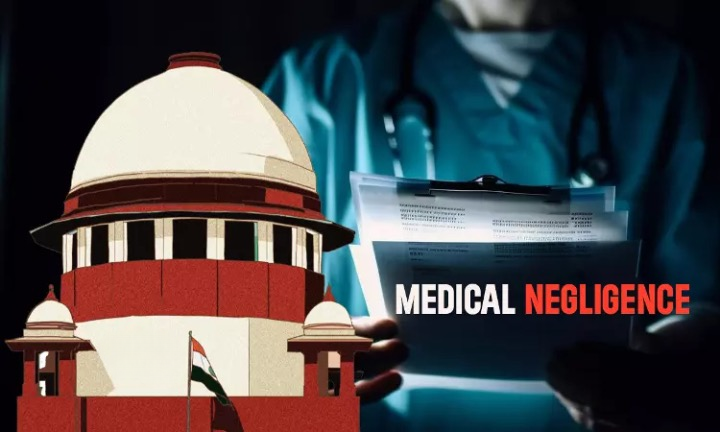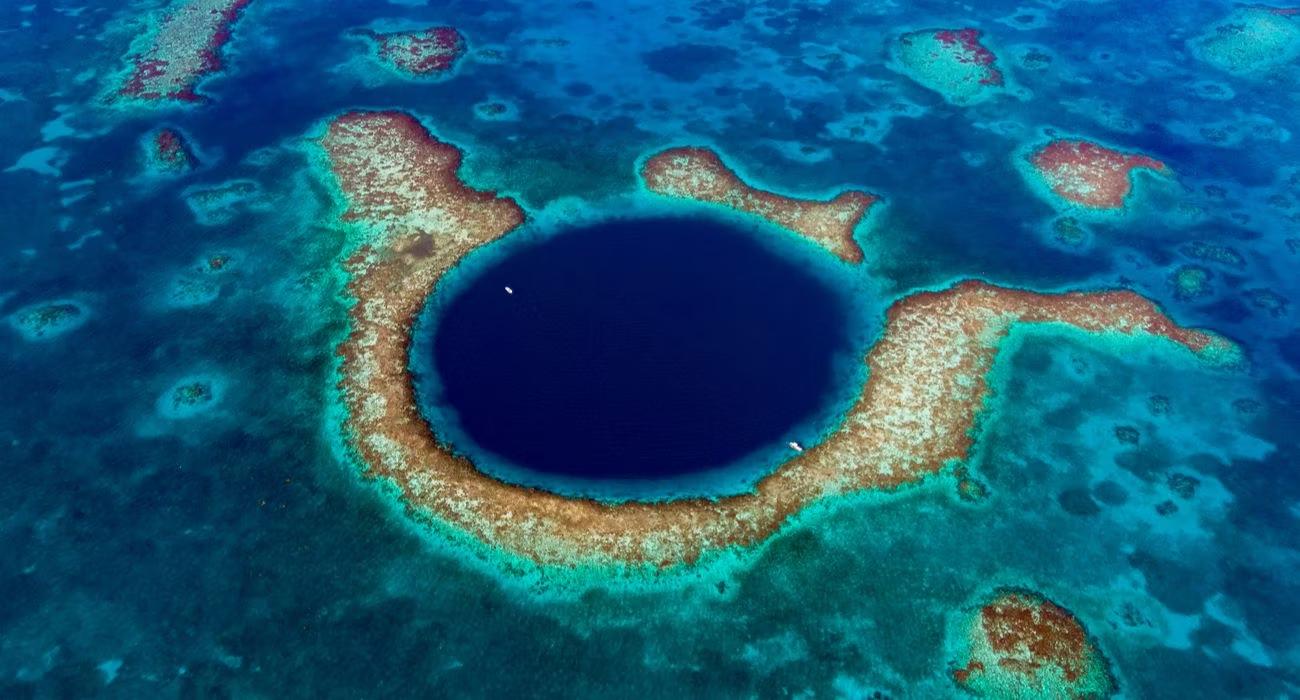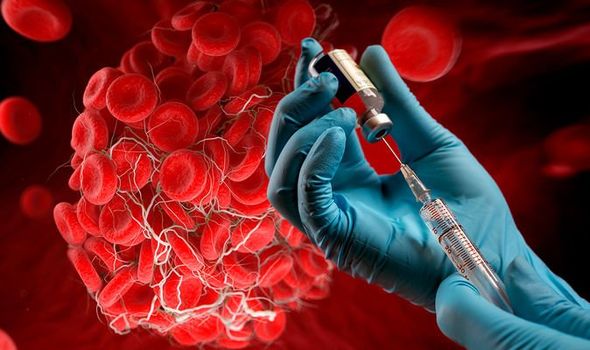'Egg Shell Skull' Rule

- 30 Apr 2024
Why is it in the News?
Underlining that the state and central consumer courts incorrectly applied the ‘eggshell skull’ legal principle, the Supreme Court recently restored the compensation of Rs 5 lakhs awarded by the district consumer forum in a medical negligence case.
What is the ‘Eggshell Skull’ Rule?
- The eggshell skull rule is a common law principle applied in civil litigation.
- Essentially, when the offender would be liable for all injuries that might be intensified due to the peculiar conditions of the injured person that the offender might not have known.
- Simply put, the defendant would be held responsible for injuries caused to a person when he hit him on the head, even if the victim had a particularly delicate skull or an ‘eggshell’ for a skull.
- A person who has an eggshell skull would be more severely impacted by an act, which an otherwise “normal person” would be able to withstand.
- The rule is applied for claiming an enhanced compensation, for damage that is more than what could have been ordinarily anticipated to be caused by the defendant.
Origin of the ‘Eggshell Skull’ Rule:
- The 'eggshell skull' rule, also known as the 'thin skull rule,' is a legal doctrine that holds a defendant liable for all consequences resulting from their negligent or intentional actions, even if the victim's pre-existing vulnerability worsens the outcome.
- The rule's origins can be traced back to an 1891 US case, Vosburg v. Putney, in which a boy kicked another's shin without knowing about his prior injury, leading to complications.
- The Wisconsin Supreme Court held that the defendant was responsible for the subsequent harm, even though he did not intend to cause such severe damage.
- A similar case in England a decade later involved a pregnant woman who experienced severe shock and gave birth to a disabled child after a horse van was negligently driven into a public house where she worked.
- The King's Bench upheld the principle that defendants are liable for the harm caused to victims, regardless of pre-existing vulnerabilities.
- The eggshell skull rule has been applied in various legal cases across different jurisdictions, emphasizing that defendants are accountable for the consequences of their actions, even when victims' unique vulnerabilities contribute to more significant harm.
What was the Jyoti Devi Medical Negligence Case?
- In 2005, Jyoti Devi underwent an appendix removal surgery in Himachal Pradesh, India.
- However, her abdominal pain persisted, leading to a four-year ordeal and multiple hospital visits.
- Eventually, doctors discovered that a 2.5 cm needle had been left in her abdomen during the initial surgery, requiring another operation to remove it.
- Jyoti sought compensation for medical negligence and was initially awarded Rs 5 lakhs by the district consumer forum.
- The hospital appealed, leading to the state consumer forum reducing the compensation to Rs. 1 lakh, and the National Consumer Disputes Redressal Commission (NCDRC) increasing it to Rs. 2 lakhs.
What did the SC Rule?
- The Supreme Court (SC) restored the original Rs 5 lakh compensation, criticizing the lower compensation amounts as "paltry" and "unjust."
- The SC ruled that the 'eggshell skull' rule did not apply in Jyoti's case since there was no evidence of a pre-existing vulnerability or medical condition that contributed to her suffering.
- The court cited two factors for increasing the compensation: Jyoti's prolonged pain over five years and the decade-long legal battle she endured.
Global Leaders Group on Antimicrobial Resistance

- 30 Apr 2024
Why is it in the News?
The European Society for Clinical Microbiology and Infectious Diseases (ESCMID) and the Global Leaders Group (GLG) on AMR jointly organized a high-level event, ‘Forging partnerships between science and policy’, on April 26, 2024, in Barcelona, Spain.
About Global Leaders Group on Antimicrobial Resistance:
- Established in November 2020, the Global Leaders Group on Antimicrobial Resistance is a collaborative effort of world leaders and experts from various sectors working together to accelerate political action against antimicrobial resistance (AMR).
- The Group serves as an independent global advisory and advocacy entity, striving to maintain public support, political momentum, and visibility of AMR on the global health and development agenda.
- Background: The Group emerged from a recommendation by the Interagency Coordination Group on Antimicrobial Resistance, aiming to strengthen global leadership and political action against AMR.
- The first meeting of the Group was held in January 2021.
Secretariat Support:
- The Quadripartite Joint Secretariat (QJS) on Antimicrobial Resistance, a joint effort by the Food and Agriculture Organization of the United Nations (FAO), the United Nations Environment Programme (UNEP), the World Health Organization (WHO), and the World Organisation for Animal Health (WOAH), provides secretariat support for the Group.
- Through its collaborative and multisectoral approach, the Global Leaders Group on Antimicrobial Resistance is committed to addressing the growing threat of AMR and promoting responsible and sustainable access to antimicrobials.
What is antimicrobial resistance (AMR)?
- Antimicrobial resistance (AMR) refers to the ability of microorganisms, such as bacteria, viruses, fungi, and parasites, to develop resistance to the effects of antimicrobial drugs, such as antibiotics, antivirals, antifungals, and antiparasitics.
- As a result, the medications become less effective or even ineffective at treating infections caused by these resistant microorganisms.
- AMR occurs when microorganisms undergo genetic changes that enable them to survive exposure to antimicrobial drugs.
- These changes can be shared between different microorganisms, leading to the spread of resistance genes.
- Over time, the increased use and misuse of antimicrobial drugs have accelerated the development of AMR.
Common factors contributing to AMR include:
-
- Overprescription of antimicrobials
- Non-adherence to prescribed treatment regimens
- Misuse of antimicrobials in agriculture and livestock farming
- Poor sanitation and hygiene practices
- Lack of access to clean water
- The rise of AMR poses a significant threat to public health, as it makes the treatment of common infections more difficult and increases the risk of complications.
- Additionally, AMR has implications for global health security, as resistant infections can spread rapidly across regions and become a major public health challenge.
Taam Ja' Blue Hole

- 30 Apr 2024
Why is it in the News?
Recently, scientists have uncovered a massive sinkhole off the coast of the Yucatan Peninsula in Mexico.
What is Taam Ja' Blue Hole?
- Taam Ja' Blue Hole is the world's deepest known underwater sinkhole, recently discovered in Chetumal Bay off Mexico's Yucatan Peninsula.
- The blue hole extends approximately 420 meters (1,380 feet) below sea level, making it significantly deeper than the previous record holder, the Dragon Hole in the South China Sea.
- The nearly circular sinkhole covers an area of around 13,660 square meters and features steep sides covered in biofilms, sediments, limestone, and gypsum ledges.
- Named "Taam Ja'," meaning "deep water" in the Mayan language, the blue hole was initially discovered by a local diver in 2003 but only recently gained scientific attention.
- Further research is ongoing to explore the unique marine life and geological features within this remarkable underwater cavern.
What is a Blue Hole?
- A blue hole is a large, underwater sinkhole or cavern with a submerged opening that appears dark blue from above due to the depth and clarity of the water.
- The name "blue hole" originates from the striking contrast between the dark blue, deep water within the hole and the lighter blue shallower water surrounding it.
- These unique geological formations are typically formed through a combination of erosion and dissolution of limestone bedrock, resulting in circular or ovular depressions in the seafloor.
- Over time, blue holes can develop distinct ecosystems hosting a variety of marine life, including unique and rare species that have adapted to the specific conditions within these habitats.
- Blue holes can be found in various parts of the world, both in oceanic and inland settings.
- Some famous examples include the Great Blue Hole in Belize, the Dean's Blue Hole in the Bahamas, and the Taam Ja' Blue Hole in Mexico.
Thrombosis with Thrombocytopenia Syndrome (TTS)

- 30 Apr 2024
Why is it in the News?
Global pharmaceutical giant AstraZeneca has said that its AZD1222 vaccine against Covid-19, which was made under license in India as Covishield, could cause low platelet counts and formation of blood clots in “very rare” cases.
What is Thrombosis with Thrombocytopenia Syndrome (TTS)?
- Thrombosis with Thrombocytopenia Syndrome (TTS) is characterised by thrombosis formation (blood clots) combined with thrombocytopenia (low platelet count) with symptoms typically presenting in the 4-42 days after vaccination.
- Platelets are small cells that help blood to clot, so having too few of them can be dangerous.
- It often involves unusual blood clot locations, such as in the brain (cerebral venous sinus thrombosis) or abdomen.
- The condition was observed in people who received adenoviral vector COVID-19 vaccines, such as Vaxzevria, Covishield (AstraZeneca), and the Johnson & Johnson/Janssen COVID-19 vaccine.
- TTS seems to occur because the body's immune system reacts to the vaccine by making antibodies that attack a protein involved in blood clotting.
- According to the Centers for Disease Control (CDC), TTS is classified into 2 tiers based on the location of thrombosis and severity of symptoms.
Tier 1:
- Rare blood clots, like in the brain or gut, sometimes alongside more typical ones in the legs or lungs.
- Low platelet count (below 150,000 per microliter).
- Positive anti-PF4 ELISA tests can help confirm diagnosis but aren't always needed.
- Tier 1 cases are usually more severe and riskier.
- This is more common in younger people.
Tier 2:
- Common blood clots, like in the legs or lungs.
- Low platelet count (below 150,000 per microliter).
- A positive anti-PF4 ELISA test is necessary for diagnosis.
Symptoms of TTS:
- Symptoms of TTS can include severe headaches, stomach pain, swelling in the legs, trouble breathing, and problems with thinking or seizures.
Great Rift Valley

- 30 Apr 2024
Why is it in the News?
A dam burst near a village in the Rift Valley region of southern Kenya in the early hours of April 29, 2024. Some 45 people have been killed according to the police chief of Nakuru County, where the incident took place.
About the Great Rift Valley:
- The Great Rift Valley, part of the larger East African Rift System (EARS), is a significant geological feature extending across East Africa, from Jordan in southwestern Asia to central Mozambique's coast along the Indian Ocean.
- Running through numerous countries including Eritrea, Djibouti, Ethiopia, Kenya, Tanzania, Uganda, Rwanda, Burundi, the Democratic Republic of Congo, Malawi, Zambia, and Mozambique, the valley is one of Earth's most expansive rifts.
Formation:
- Resulting from tectonic plate movements about 40 million years ago, the Great Rift Valley's formation is linked to the East African Rift's emergence.
- Geologically active, the region experiences frequent earthquakes, volcanoes, hot springs, and geysers.
Notable Features:
- A series of approximately 30 lakes dot the Great Rift Valley, including Lake Tanganyika (the world's second-deepest lake) and Lake Victoria (the second-largest freshwater lake by surface area).
- Many of Africa's highest mountains, such as Mount Kilimanjaro, Mount Kenya, and Mount Margherita, form part of ranges fronting the valley.
What is a Rift Valley?
- A rift valley is a lowland region that forms where the Earth's tectonic plates move apart or rift.
- Rift valleys are a result of the tectonic processes that shape the Earth's surface, specifically in regions where tectonic plates are diverging or pulling away from each other.
- Rift valleys are characterized by a long, narrow depression, often with steep sides, running along the length of the rift.
- The depression is caused by the sinking of the ground between the two diverging plates as they pull away from each other.
- The thinning of the Earth's crust leads to subsidence and the formation of a valley.
- Rift valleys can be found on land as well as on the ocean floor.
Some notable examples of rift valleys include:
- The Great Rift Valley in East Africa is part of the larger East African Rift System.
- The Red Sea Rift separates the African and Arabian tectonic plates.
- The Rhine Valley in Europe was formed by the divergence of the European and African plates.
- Rift valleys are geologically active areas often associated with volcanic activity, earthquakes, and the formation of hot springs, geysers, and other hydrothermal features.
